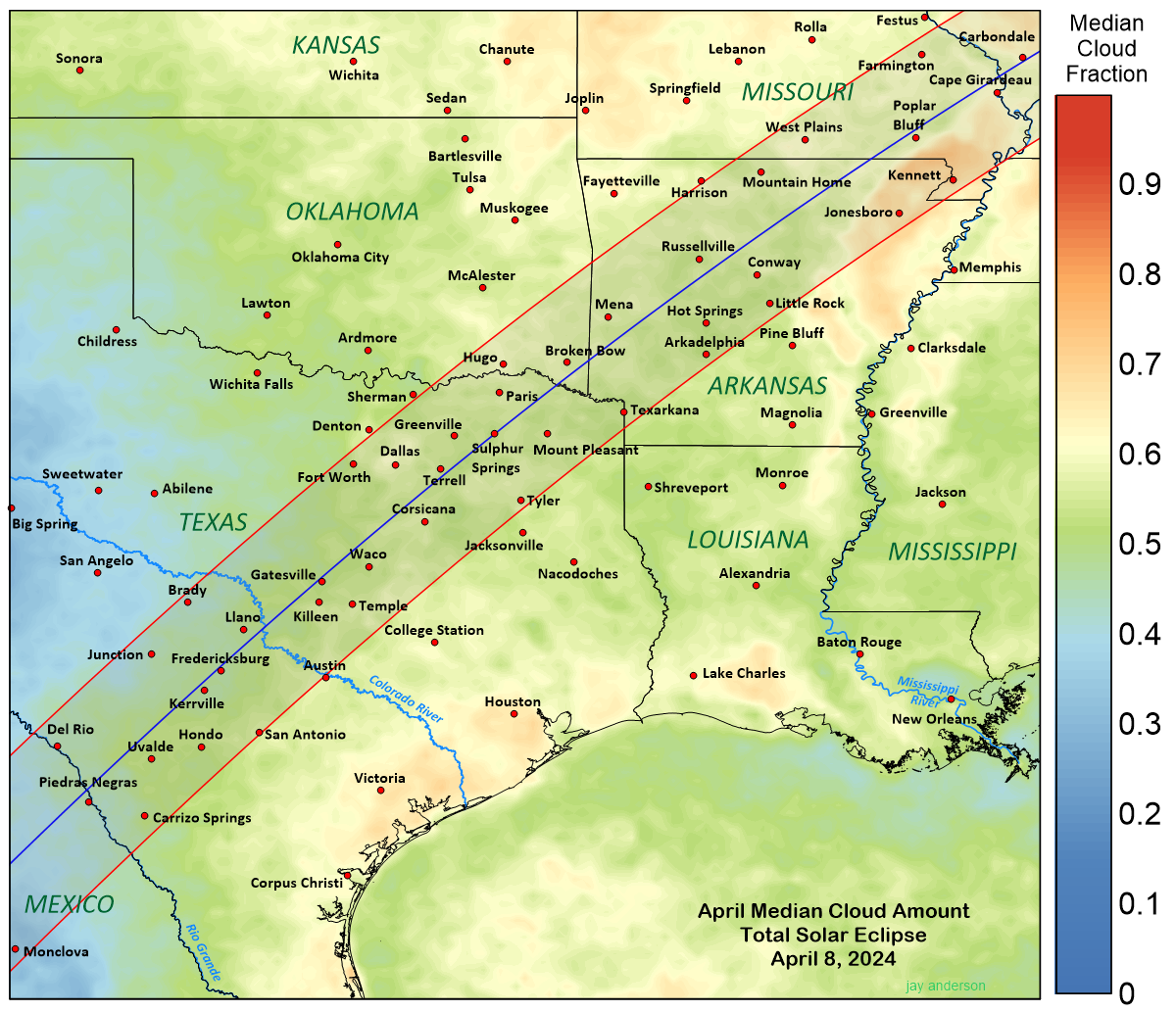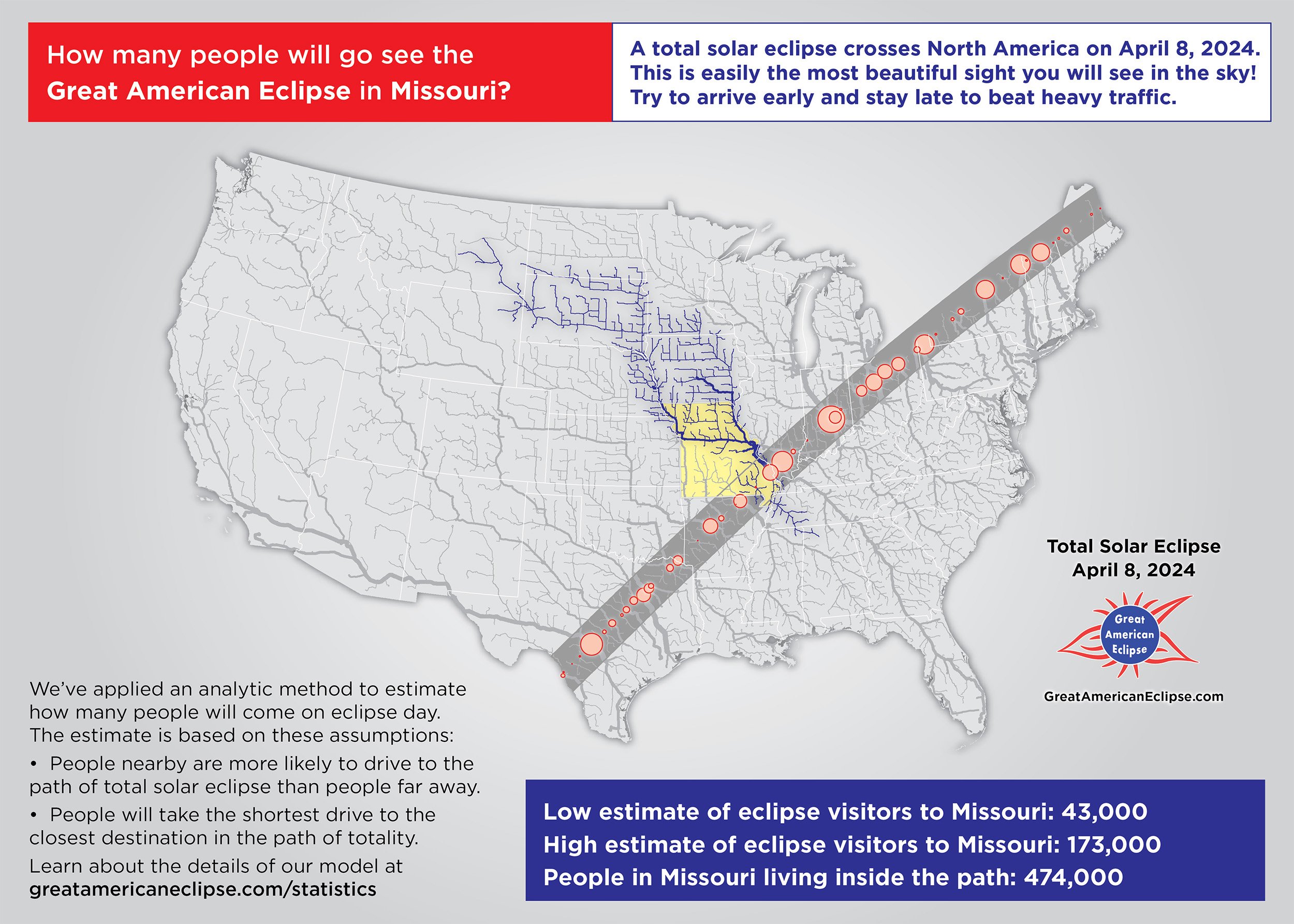Come fly with the Moon’s shadow! Everyone inside the shadow will experience the breathtaking sight of the Sun’s corona during the total solar eclipse of April 8, 2024.
This animation simulates a view of the total eclipse from a spacecraft 100 miles high, chasing the shadow along its arc.
Total Solar Eclipse over Missouri on April 8, 2024
This map is available at www.greatamericaneclipse.com/eclipse-maps-and-globe/missouri-2024-state-map
Missouri is a great destination for the total solar eclipse! Be prepared to see the greatest sight nature offers, a total eclipse of the Sun. Be sure to get inside the path of totality for the full experience.
Simply put, a total eclipse of the Sun is the most beautiful sight you will ever see in the sky. Nothing can prepare you for the amazing sight when the sky suddenly darkens and the Sun’s corona shines in the sky. No photograph can capture the stunning beauty of a total solar eclipse, you must see it for yourself. Learn about the basics of the solar eclipse at greatamericaneclipse.com/basics and find out more about the wonder of eclipses at greatamericaneclipse.com/splendor. Find your copy of this map here.
Southeast Missouri will be the focus for eclipse visitors. The cities of Doniphon, Poplar Bluff, Cape Girardeau, and Perryville are attractive destinations with long duration of totality and good highway access. Expect many citizens of St Louis to make the short drive south along the Mississippi River on eclipse day.
A special eclipse conference is planned for Cape Girardeau on July 21-22, 2023. This is the Missouri Solar Eclipse Expo and you can register for free at moeclipse.org. We will be present at this Expo and look forward to meeting some of you!
For eclipse viewing, mobility is essential especially in case of inclement weather. Interstate 55 south from St Louis through Perryville and Cape Girardeau to New Madrid gives many options for mobility if dodging clouds is needed. US route 60 from Poplar Bluff to the Mississippi River provides good east-west access.
The total solar eclipse visits Missouri on April 8, 2024 beginning at 1:53 pm CDT with the final exit of the Moon’s shadow from the state at 2:02 pm CDT. Through Missouri, the speed of the Moon’s shadow will accelerate from about 1775 miles per hour to about 1900 miles per hour.
Tips for viewing the eclipse
Get your eclipse glasses early! They will sell out in the weeks before eclipse day. We offer eclipse glasses which are ISO 12312-2 certified and made in the USA at www.greatamericaneclipse.com/eclipse-viewing/eclipse-viewing-glasses
Learn the simple methods to safely view a solar eclipse. Visit eclipse.aas.org/eye-safety for detailed instructions.
Plan ahead. If you choose to stay in a hotel, be aware that most will sell out. A perfect guide to planning your eclipse is our field guide, greatamericaneclipse.com/books/field-guide-to-the-2023-and-2024-solar-eclipses.
Get to your destination early and try to spend eclipse night at or near your viewing location. Expect the highways and freeways to be extra busy in the aftermath of totality.
Be self-sufficient. Fill up your gas tank and bring food and water.
Check the local TV weather reports as eclipse day approaches. The meteorologists will give you great advice on viewing the eclipse and whether you may need to relocate. We recommend eclipsophile.com as the essential site for eclipse meteorology.
Unless you are an experienced photographer, we recommend that you not attempt photography during the eclipse. You will be so stunned that it will be difficult to operate a camera. If you choose to do photography, visit Fred Espenak’s MrEclipse.com for advice.
Animation of the Moon’s shadow
Our animation shows you exactly where the eclipse will be total, moment-by-moment. The maximum duration shown is for locations along the very center of the eclipse path. This animation is built using data from retired NASA astrophysicist Fred Espenak (eclipsewise.com) and eclipse expert Xavier Jubier (xjubier.free.fr). You may freely share our maps and animations on social media and web sites, we just ask for a live link to our website.
Eclipse weather in Missouri
Courtesy of eclipsophile.com
The premier eclipse weather website eclipsophile.com states the following: “As we look along the graph of centreline cloudiness for this region, we see a modest increase in cloud cover from the Mexican border to the Missouri River. Most of the rise takes place in Texas where the eclipse path moves from dry-season desert climatology into mid-latitude springtime weather. April is a month that has both a summer and a winter personality, sometimes with convective thunderstorms (including severe weather) and at other times, cold-season low-pressure storm systems.”
Our advice is to stack your odds by paying attention to short-term weather forecasts and if poor weather is forecast, jump in your car very early on eclipse day (or the evening before) and drive either to the southwest or northeast to chase after clear skies. You will never regret the effort to seek out a clear view of a total eclipse of the Sun, it will register in your memory all your life.
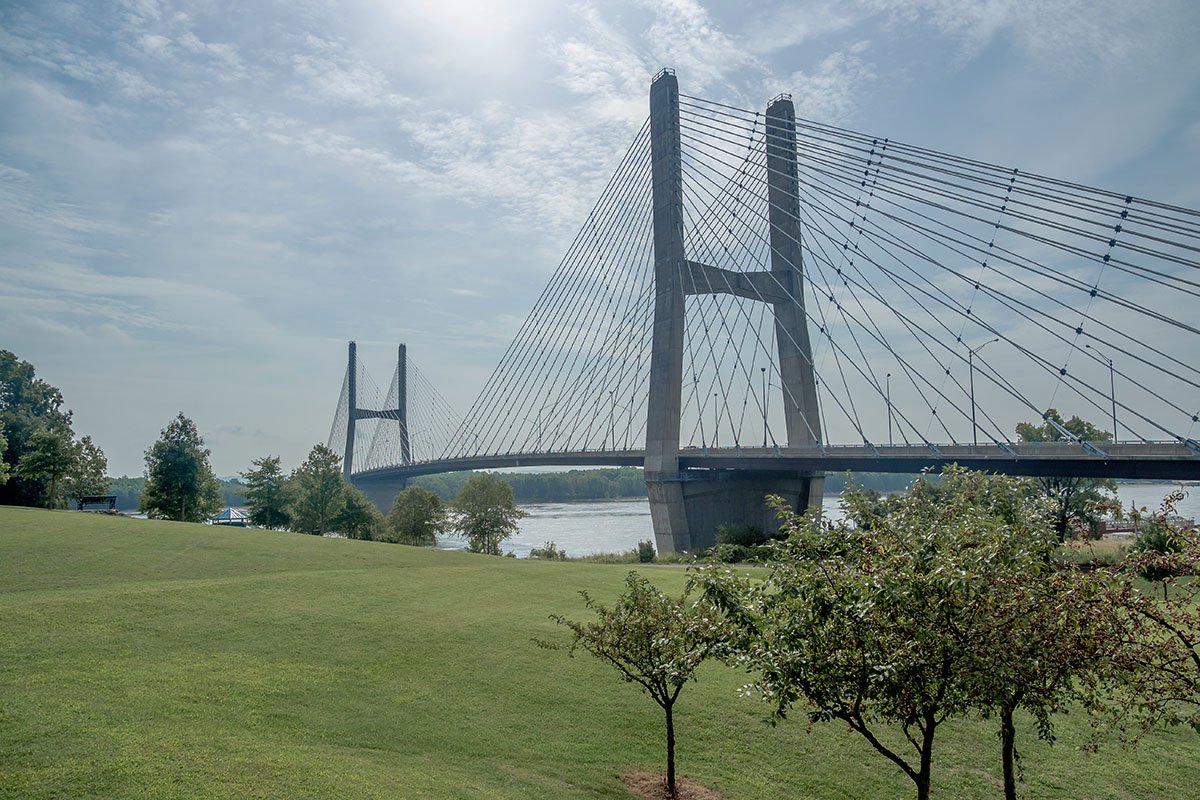

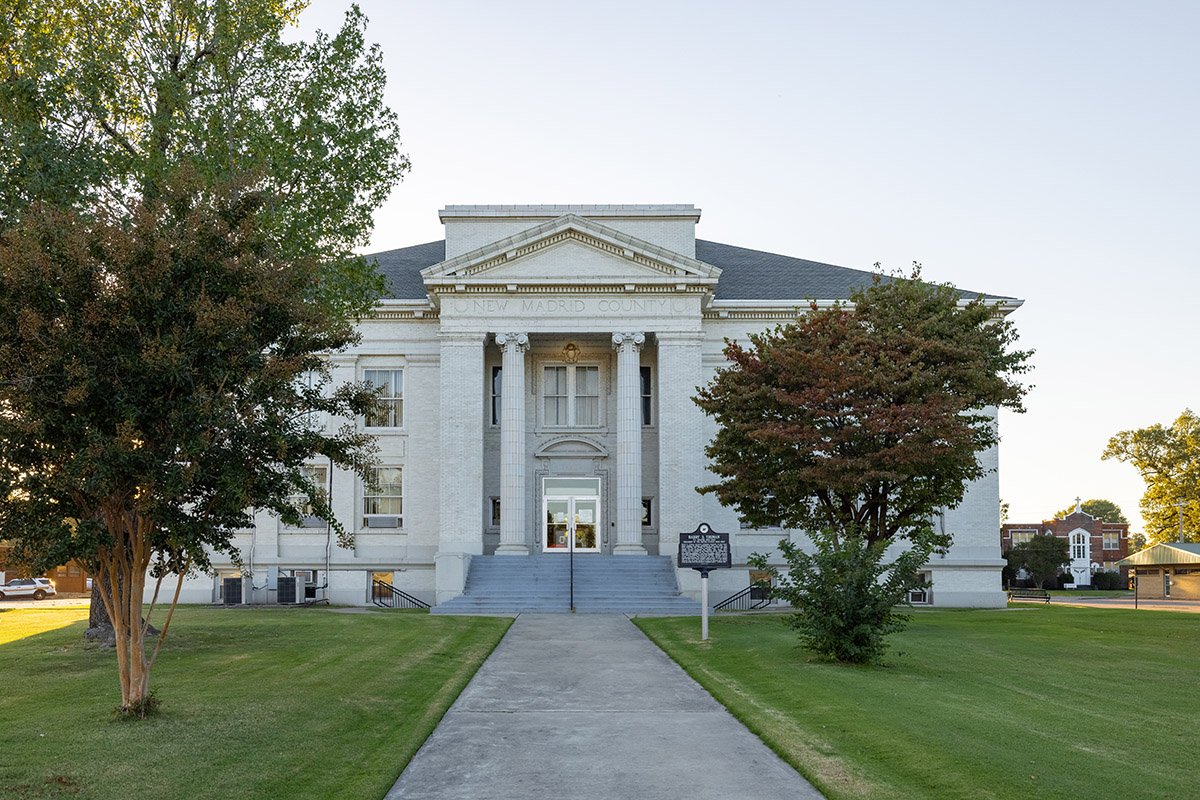
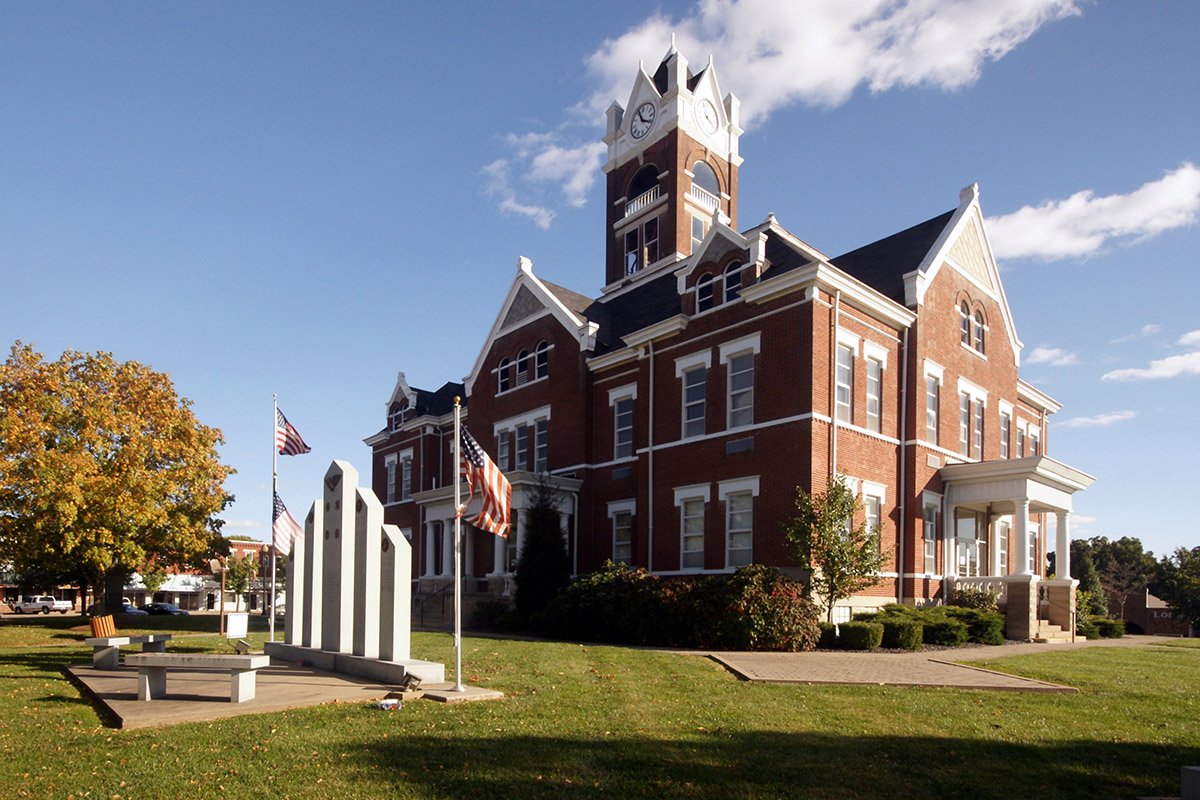
How many people will come Missouri to see the eclipse?
As the total solar eclipse in 2017 proved, the eclipse will be a magnet for millions of people across the nation. We’ve analyzed population distributions and the national road network and present our rough estimate of how many people will come to Missouri for the eclipse. Learn more about our methodology at greatamericaneclipse.com/statistics.
Additional resources for the Missouri eclipse
These are websites with additional information on the eclipse in Missouri. If you would like your website to be on this list, email us at media@greatamericaneclipse.com
moeclipse.org is the Missouri Solar Eclipse Expo to be held on July 21-22 in Cape Girardeau, Missouri


